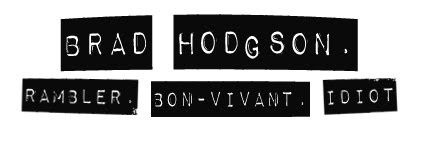This was my first visit to this bi-annual event and only my 3rd visit to Liverpool and I was lucky enough to have our very own scouse tour guides April and Jaclyne on hand to find all the interesting ports of call, both biennial related and also relevant parts of Liverpool.
The event caters for everyone and a real effort is made in planning a festival which hosts exhibits and events to cater for all tastes, and it was this inclusiveness to all which I found was one of the true successes of the biennial, there was activities and exhibitions to suite every age range and personality, that hardest part was making time for them all, after all this was the 'Biennial' and not the 'Biennale' which a few over cultured people insisted on calling it.
The event caters for everyone and a real effort is made in planning a festival which hosts exhibits and events to cater for all tastes, and it was this inclusiveness to all which I found was one of the true successes of the biennial, there was activities and exhibitions to suite every age range and personality, that hardest part was making time for them all, after all this was the 'Biennial' and not the 'Biennale' which a few over cultured people insisted on calling it.
Each Biennial is themed – this year the theme is Touched, which explores not only the idea of being emotionally affected by works of art, but also physical contact with works of art – something you would not necessarily expect to encounter in a museum or art gallery.
Photography prohibited and with a poor online archive of images
Interactions within a space

Wayne Hemmingway & Son
After the Tate it was off to see an entry into a previous bienniel that has since captured the heart of Liverpool and remained as a permanent piece of work - Richard Wilson's Turning the Place Over.
Although not as impressive as I thought it would be, I put this down to the poor weather and location not being where I imagined it, the work is still an impressive piece perfect for interacting with the public in terms of generating curiosity.
After a quick detour for lunch at the fantastic Eddie Rockets for a 50's diner style Maltshake and a Burger (just like a scene out of Nowhere Boy), it was off to the Walker Gallery.
Similar I guess to Leed's own City Gallery but on a much grander scale, the Walker gallery housed the annual John Moores Painting Prize as well as an exhibit I had been looking forward to, Wolfgang Tilmans.
Whilst photography was prohibited within the John Moore's prize exhibit, there is an extensive online gallery of all the entrants for theis years edition, of which a selection are shown below.
Wolfgang Tilmans
Having previously mentioned how much I was looking forward to seeing Tilmans work, known for it's unique display style, I'll have to admit that I was hugely dissapointed with the work on display in the Walker Gallery.
With all the fuss that had been kicked up about having Wolfgagns's work on display,with posters and advertisements everywhere, I was baffled to find the work itself almost impossible to find.
The basic concept it seemed, as that any spare space the gallery had was occupied with a Tilmans work, which meant that I missed a lot of them at first because they were in places that you didn't expect, which may sound good on paper but in practice, to me, failed.
Then it was off for a quick mooch of the great student friendly art shop - Rennie's.
One Year Performance (1980-1981)
Tehching Hsieh is an artist who has been mythologized since retiring from making art in 2000. In 1970s and 1980s New York, he made an exceptional series of artworks: five separate one-year-long performances.
The exhibition will focus on documentation of his performance ‘life work’, One Year Performance 1980-1981 (Time Clock Piece).
For one year, the artist punched a worker’s time clock located in his studio, on the hour, every hour. Marking the occasion by taking a self-portrait on a single frame of 16mm film, the resulting reel documents a year in his life at approximately one second per day – a pace that is polar opposite of the enduring length of the original performance. The punch cards, witnessed by a third party for authenticity, and other ephemera, document Hsieh’s life restructured around this highly repetitive task.
This will be the first exhibition of the Taiwanese-born, New York-city based artist’s work in Europe.
I never realised just how much public art Liverpool had, with images I've seen many times before such as Banksy's 'Rat' suddenly appearing on the corner of an abandoned building.
Warehouse where we watched a film of Bill Clinton's visit to commemorate the lifes lost in the Rwandan Genocie of 1994.
which in the day time looks like this




























































